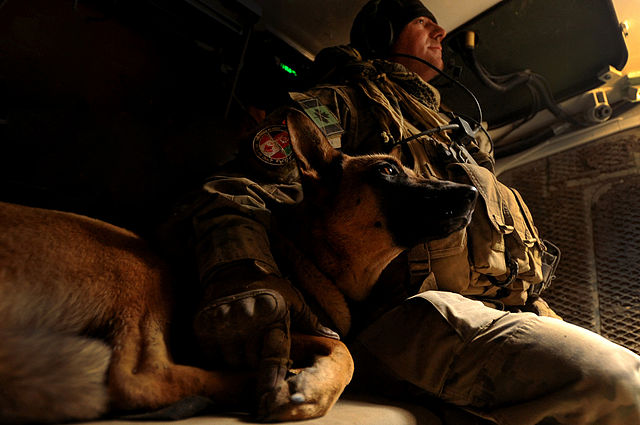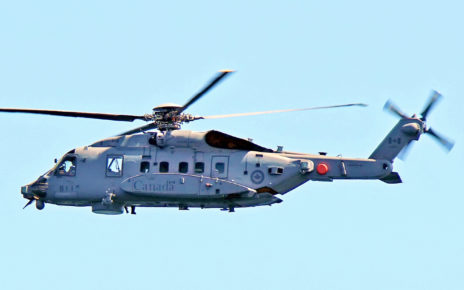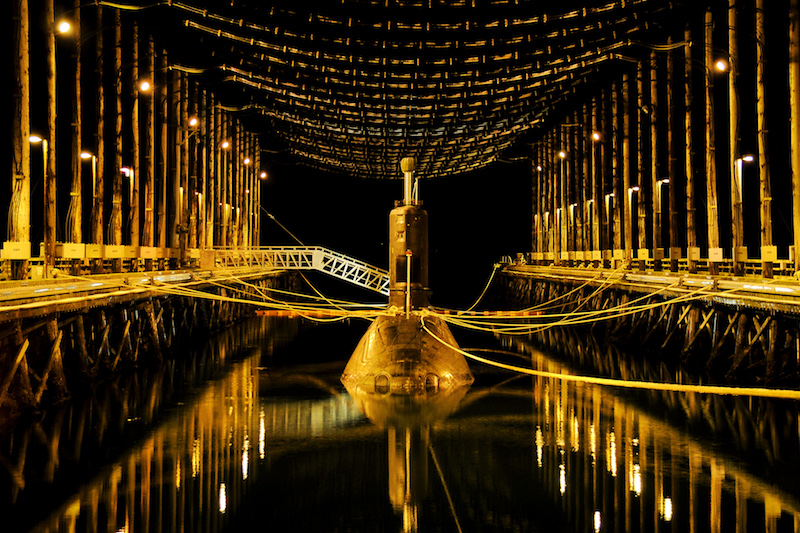Animals are no strangers to wars. Since the implementation of cavalry and horse drawn chariots, domesticated animals have been used and abused as resources for war. The role of skirmishing cavalry has long passed on the modern battlefield and dogs have become the new state of the art technology in asymmetrical warfare and counter-insurgency operations. Our canine friends’ incredible sense of smell and intelligence have been harnessed in recent conflicts to counter Improvised Explosive Devices (IEDs) and detect illegal substances. Even off the battlefield, dogs serve as a great boost to soldiers’ morale and bring a sense of warmth to the homesick while overseas.
Historically Canada’s use of dogs during wartime was not a niche as it is oftentimes portrayed by modern media. During the First World War, the British and by extent the Canadians on the Western Front used dogs to locate the enemy, act as sentries, and to transport equipment. These diverse roles were once again put upon our canine comrades during the Second World War and would produce perhaps the most famous Canadian dog, Sergeant Gander. Gander, a Newfoundland dog became an iconic figure of the Battle of Hong Kong for his huge size and immense loyalty to the ill-fated Canadian troops defending the isolated outpost. His heroics were highlighted when Japanese troops started throwing grenades into the Canadian defensive positions. Obediently, Gander took the grenades in his mouth and was last seen picking up a grenade in his mouth and charging into the enemy lives, thereby saving the lives of numerous wounded Canadians. For his gallantry, he was awarded the Dickens Medal, the animal equivalent of the Victoria Cross.
Our canine brethren nowadays have been harnessed for far more than just their fear factor. On the modern battlefield, dogs have become a force multiplier during combat patrols by functioning as an early warning detection device to overcome the IED threat. During Canada’s last major armed conflict in Afghanistan, 93 out of the 158 fatal casualties were caused not by insurgent firepower, but by the carefully hidden IEDs laid by the Taliban. These deceptive devices ranged from small homemade bombs to 155mm Soviet artillery shells hidden under roads designed to decimate coalition convoys. There are numerous ways of tracking down and eliminating IEDs ranging from the old fashioned hand held mine detector to complex counter-insurgency technology such as tracked robots made famous by the film the Hurt Locker. However when technology fails, dog teams have proven time and time again their worth on the battlefield as exemplified by an American black Labrador named Sgt Rey. The black lab along with her owner, served with Canadian Forces personnel in Kandahar to limit the threat of hidden IEDs.
While cutting-edge technology may catch the eye of defense procurement and the media, sniffer dogs shine through by their loyalty and reliability in austere environments. In an interview with The Globe and Mail, Major Terry Evoy remarked that sniffer dogs are “one of the most effective tools we have for finding explosive hazards. You can spend millions of dollars on technology and the technology still is not as viable as a dog’s sense of smell.” Yet the strength of these dogs is not solely limited to cost-efficiency; these canine units also serve remarkably as significant morale boosters to the troops involved in combat operations. The dogs take the same risks as the soldiers involved in patrols, oftentimes taking on the lead position making them along with their owners the first to become casualties during a firefight. The soldiers at the front of the patrol can be reassured that the dog handling team can take on hidden IEDs, allowing the rest of the soldiers to focus on the mission at hand.
Even off the battlefield, dogs continue to serve their country by treating veterans with Post Traumatic Stress Disorder (PTSD). Known by Wounded Warriors Canada as Service dogs, these canines serve as an alternative method to traditional medication to treat symptoms of PTSD.
Since the First World War, Canada’s role with dogs in times of conflict has evolved drastically. While traditionally used as sentries or guard dogs during the 20th Century, the 21st Century proved that a dog’s role on the battlefield can shift from surveillance to detection. Our canine brethren face the same threat as their handlers and prove that both in wartime and off the battlefield dogs are truly man’s best friend.
Photo: A Canadian Forces soldier from an Explosive Ordnance Unit with his dog in Afghanistan (2010) by Kenny Holston via Wikimedia. Public domain.
Disclaimer: Any views or opinions expressed in articles are solely those of the authors and do not necessarily represent the views of the NATO Association of Canada.




